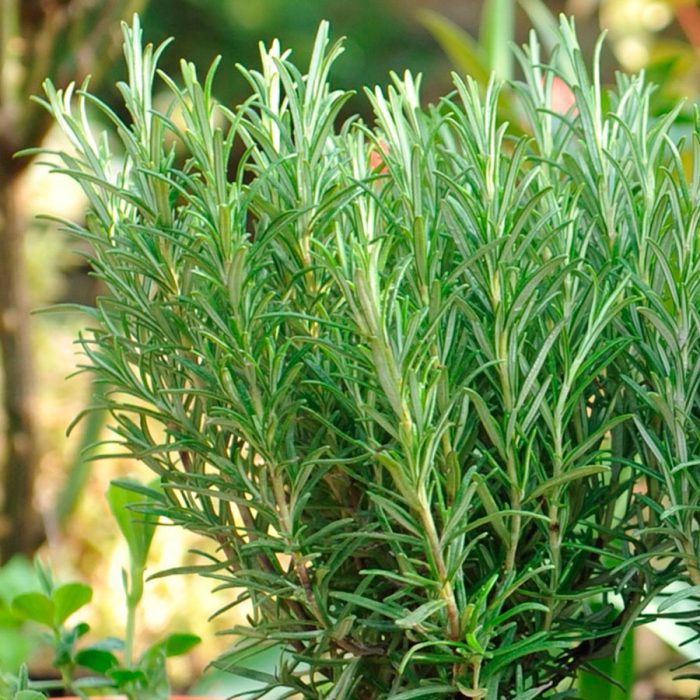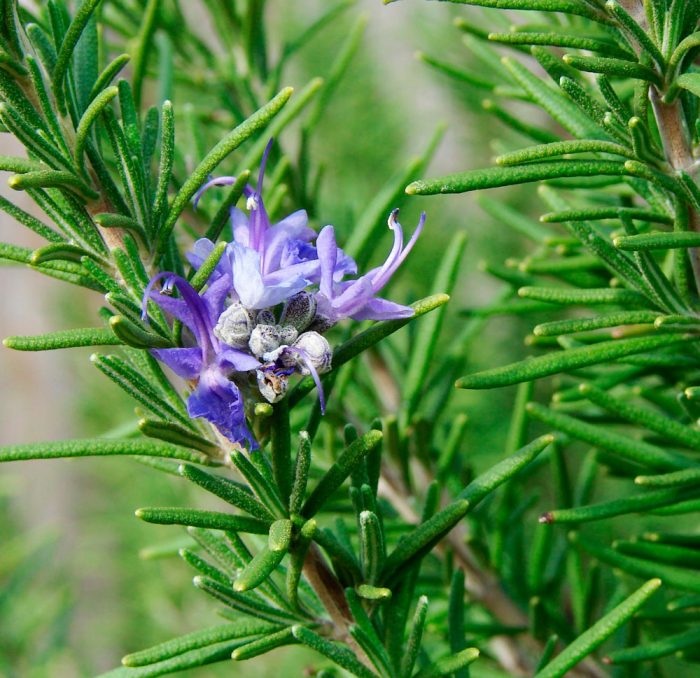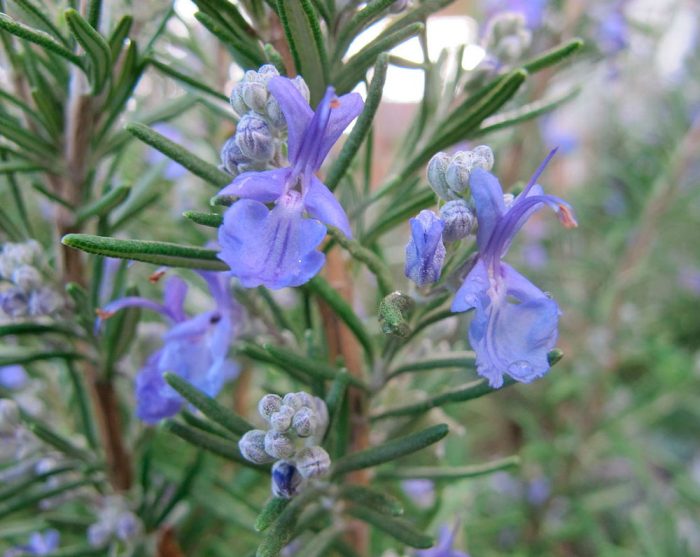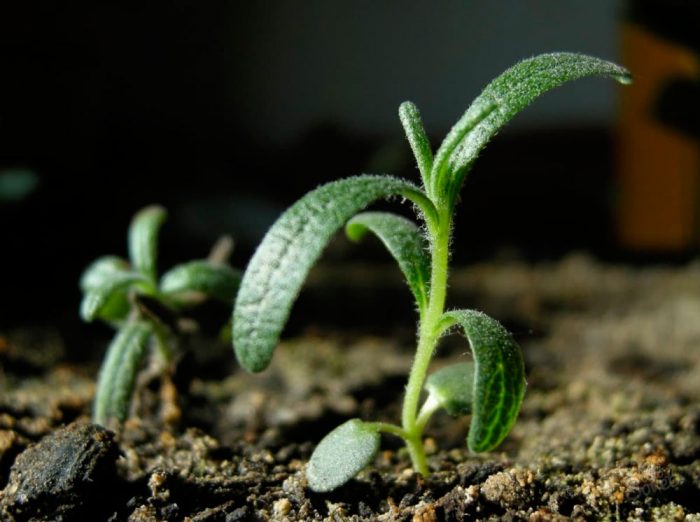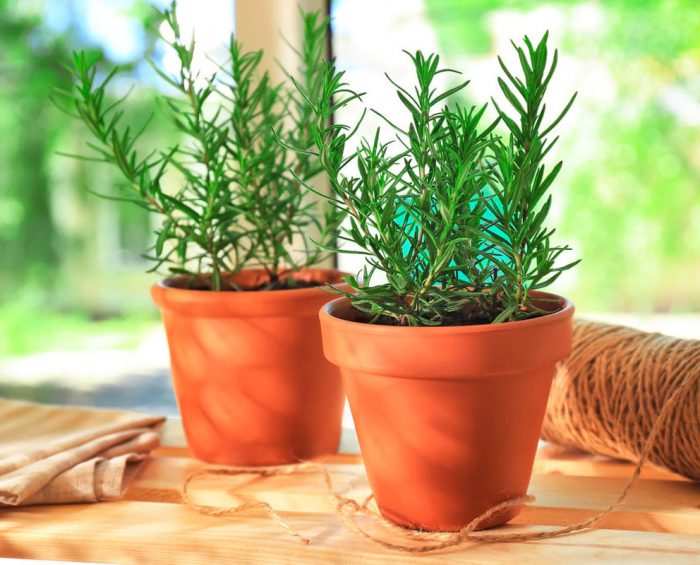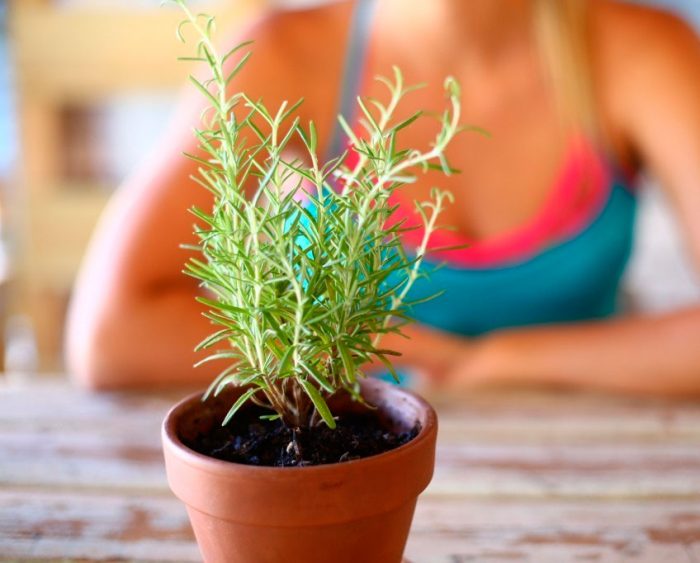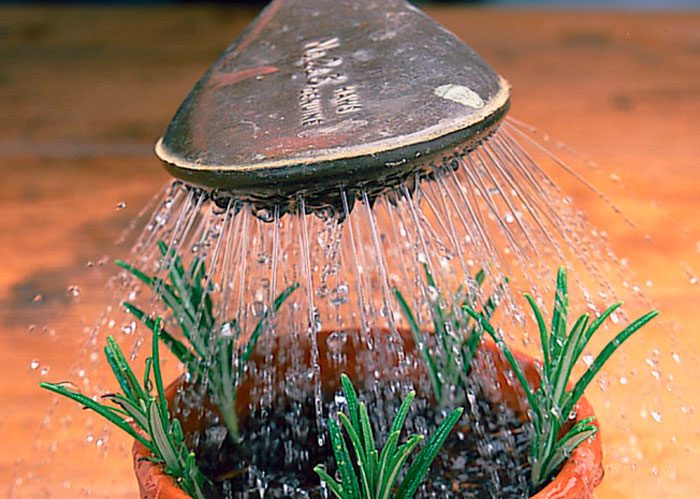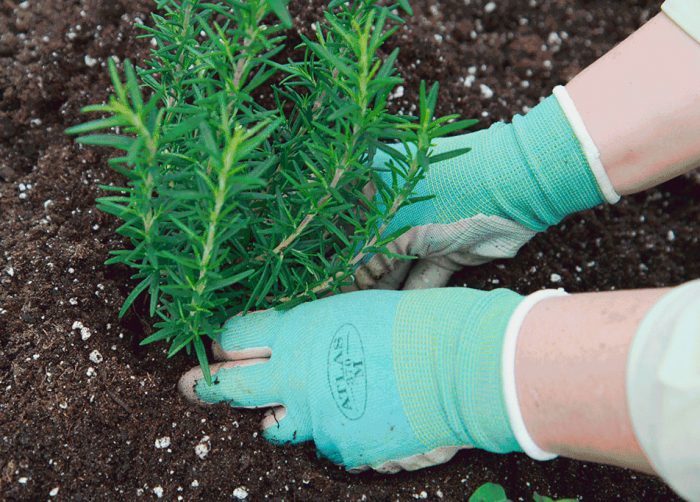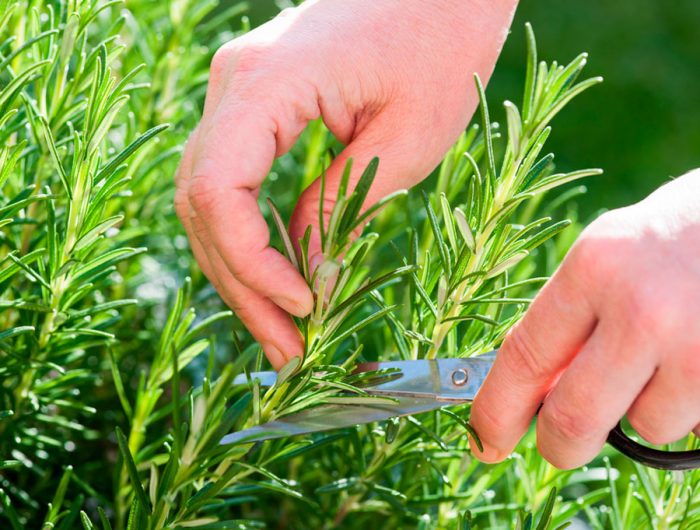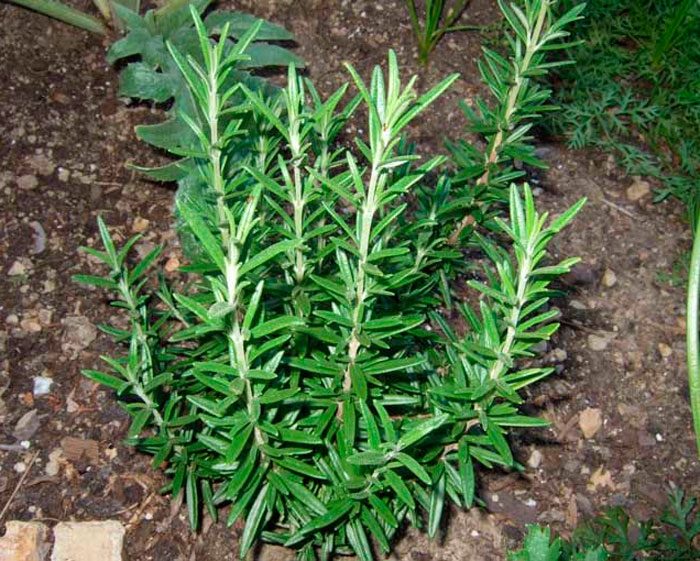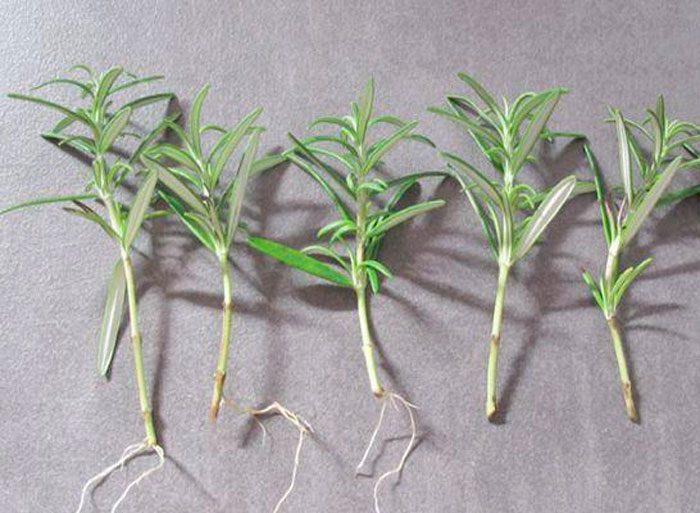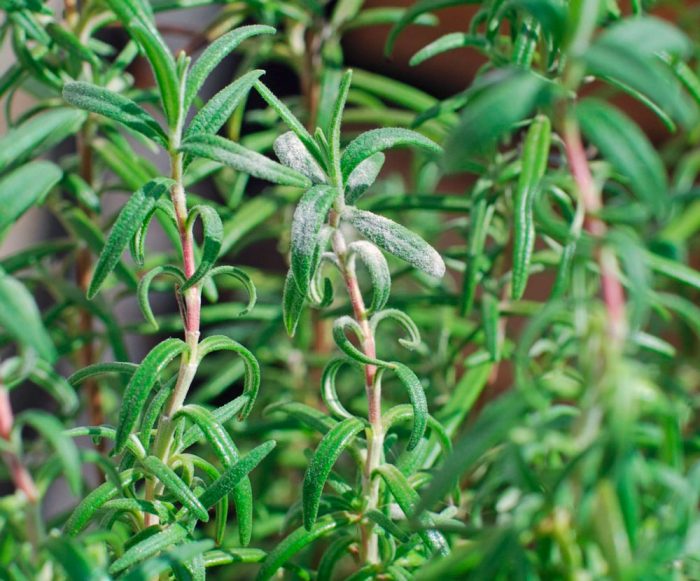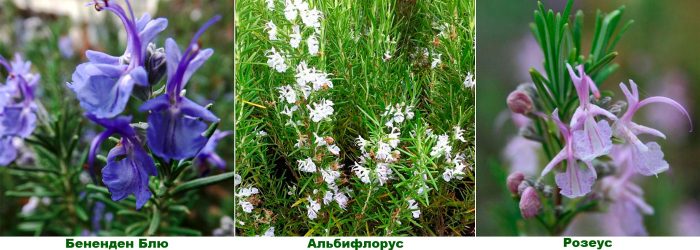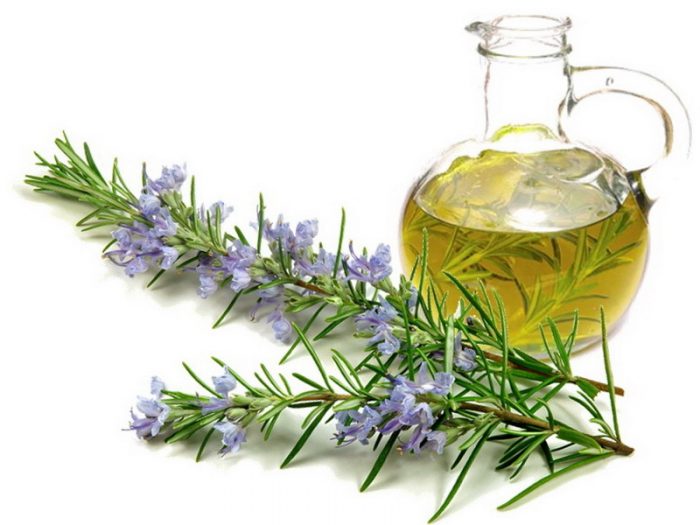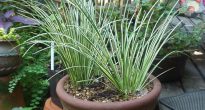The rosemary plant (Rosmarinus) is part of the Lamiaceae family. This genus is represented by evergreen shrubs and dwarf shrubs. Under natural conditions, this plant can be found on the territory of such European countries as Portugal, Italy, Spain, Greece, in the southern part of France and in the countries of the former Yugoslavia, as well as in North Africa: Tunisia, Libya, Morocco, Algeria, as well as in Turkey and in Cyprus.
From Latin "rosemary" is translated as "sea freshness", this is explained by the fact that the ancient Greeks associated rosemary with the sea Aphrodite, which appeared from sea foam. However, the smell of this plant does not at all resemble the iodine sea scent. It looks more like a combination of camphor and pine scent, therefore the Greek name of the plant, translated as "balsamic shrub", is closest to the truth. Earlier, people believed that rosemary helps to improve memory, and therefore in ancient Greece, students often wore wreaths on their heads, which were woven from the branches of rosemary. In culture, this plant has become popular due to its special aroma. This plant is included in the “garni bouquet” and collection of Provencal herbs, and it is also used in drinks, marinades, and vinegar is infused with rosemary. Such an evergreen shrub is distinguished by its heat-loving nature, therefore, it can be grown outdoors only in those regions where winters are warm. And in those countries where the climate is cool, rosemary is grown as a container and room culture.
Content
Brief description of cultivation
- Landing... Sowing rosemary seeds for seedlings is carried out in the last days of February or the first in March, and seedlings are transplanted into open ground - from mid to late May.
- Illumination... A lot of bright sunlight is needed.
- Priming... Lime, water and air permeable.
- Watering... Should be moderate. Water is poured carefully under the root to avoid droplets falling on the surface of the leaf plates.
- Fertilizer... In spring, a nitrogen-containing fertilizer is applied to the soil at the site, for example, urea or ammonium nitrate.After that, once every 30 days, the rosemary is fed with a solution of complex mineral fertilizer. In autumn, those fertilizers are used that contain only phosphorus and potassium.
- Reproduction... Cutting, dividing the bush, seeds and layering.
- Harmful insects... Indoors - whiteflies and aphids, in the open field - aphids.
- Diseases... In winter, in indoor conditions, the plant can get sick with peronosporosis.
Features of rosemary
Rosemary is a shrub that can vary in height from 0.5 to 2 meters. Its root system is very powerful and developed, it penetrates into the soil to a depth of 3-4 meters. On the surface of grayish obtuse-tetrahedral young shoots there is pubescence. Perennial woody stems with peeling bark are colored dark gray. Seated linear leaf plates leathery to the touch have downward curved edges. The leaves reach about 0.4 cm in width, and up to 3.5 cm in length, their front surface is glossy, and pubescence is on the back. Lush panicle inflorescences consist of flowers of pale purple, dark purple or white. This plant is a relative of the following crops: hyssop, basil, lavender, mint, motherwort, thyme (thyme), oregano and lemon balm. The tops of annual shoots, along with foliage and flowers, are used fresh, adding to dishes from legumes, cabbage, eggplant and meat.
Planting rosemary seedlings
What time to sow for seedlings
For the propagation of rosemary, the seed method, cuttings, division of the bush and layering are used. In regions where winters are cold, it is recommended to grow this plant from seed through seedlings. Sowing seeds is carried out in the last days of February or the first in March.
Sowing features
Before starting sowing, the seed is kept in water for several hours. When the seeds swell, they are sown in moistened sand or vermiculite, and they only need to be buried in the substrate by 0.3–0.4 cm, and the container must be covered with a film on top. If you want the seedlings to appear as soon as possible, the crops are kept warm at all times (25 to 30 degrees). Remember to systematically remove the cover and moisten the substrate with a spray bottle to keep it a little damp at all times. If done correctly, then the first seedlings should appear after 6-8 weeks. Immediately after this, the shelter is removed, and the crops are rearranged in a well-lit place. Remember that the substrate in the container must be watered regularly, for this they use warm, well-settled water. After the height of the seedlings is 70–80 mm, they are planted in open ground.
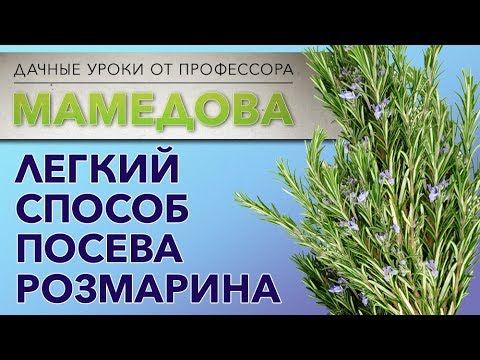

Watch this video on YouTube
Growing rosemary at home
Landing
First of all, rosemary seedlings are grown from seeds, how to do this is described in detail above. After the height of the seedlings is 70–80 mm, they are dived into separate pots (it is better to take clay pots), which should reach 9–11 centimeters in diameter; there must be holes for drainage at the bottom. The container should be filled with a substrate that allows air and water to pass through well; to create it, a universal soil mixture is combined with vermiculite or sand. You can make a soil mixture from humus, sand, sod and deciduous soil (2: 1: 2: 2). In a wet soil mixture, a small hole is made, the depth of which should be equal to the height of the seedling root. Gently pull the plant out of the container, taking it together with an earthen clod, and plant it in a pot in a previously prepared hole. Lightly compact the substrate around the plant.
Illumination and temperature conditions
It is recommended to put the planted bush on a south-facing window.In order for the rosemary crown to be beautiful and not lopsided, the container with the plant is regularly rotated 180 degrees around its axis once every 7 days. In the spring-summer period, it is recommended to transfer the bush to fresh air (terrace, garden or balcony) if possible. With the onset of autumn, after the air temperature begins to drop to minus 1 degrees, the plant is transferred to the house. It is undesirable to ventilate the room where the rosemary is located, as the cold air from the window can harm it. However, if there is no air circulation in the room, then mold can appear on the shrub. To avoid this, a fan should be running in the room for 3-4 hours every day. In winter, the air temperature in the room should be below 16 degrees, and the humidity level at this time the bush needs to be low.
Pests
When grown indoors, aphids and arachnids can settle on the plant. If you notice pests on the bush, then treat with a solution of an acaricidal or insecticidal agent. At the same time, remember that several treatments may be required to completely destroy the pests.
Watering
Make sure that the potting soil is always slightly damp (not soggy). You can understand that the shrub lacks moisture by the lower foliage: it turns yellow. If there is too much moisture in the soil mixture, then foliage begins to fly around the bush.
It is recommended to moisten the potted substrate with a watering can with a long and narrow spout, because water should not get on the surface of the leaves, as this can cause mold. Before watering, the water should settle for at least a day, and its temperature should be close to room temperature.
Fertilizer
During the growing season from March to September, the plant needs fertilizing with mineral fertilizers, which must include calcium. Top dressing is carried out regularly twice a month. In winter, the plant is not fed at all, or it is done much less frequently (once every 4–6 weeks).
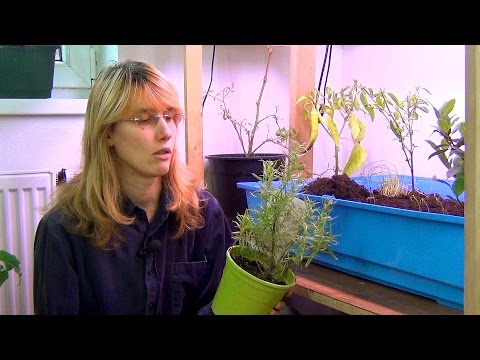

Watch this video on YouTube
Growing rosemary outdoors
You can also grow rosemary outdoors. To do this, choose a well-lit place that has reliable protection from gusts of wind. The soil needs light, loose, well-permeable water and air, and it is desirable that it be limed.
Seedlings are planted in open ground from the middle to the end of May after the establishment of warm weather, and by this time the plants should reach a height of 70 to 80 mm. If you plan to grow large bushes, then when planting seedlings, keep a distance of half a meter between them. And if you do not plan this, then it is enough to maintain a distance of 10 centimeters between the plants. The planted bushes need to be watered.
Care features
Growing rosemary in your garden is not as difficult as it might seem. You need to take care of it in almost the same way as for other horticultural crops, or rather, it should be systematically watered, fed, weeded, cut, and do not forget to loosen the soil surface in a timely manner.
7 days after planting, the bushes need to pinch the tops of the stems, in which case they will grow more lush and spectacular. Remember that the first flowering of such a plant can be seen not earlier than the second year after planting in open ground.
Pruning
Bushes of upright rosemary, starting from the age of two, are cut at a height of 3-4 internodes in the last year's growth, and they do this in April. Spread rosemary does not need pruning.
Pruning for the purpose of rejuvenating the shrub is carried out 1 time in 7 years, for this, all the stems are cut off at the level of the soil surface. In spring, formative pruning is also carried out. You can form a plant in the form of a cube, a ball or a miniature tree (for example, in the form of a cypress).Rosemary broom bonsai are very popular among gardeners.
Wintering
This shrub is thermophilic, so it can die in mid-latitudes in winter. In order to preserve the plant until spring, it is dug up and planted in a container, which is transferred to a well-lit and cool (not higher than 16 degrees) room. If it is impossible to dig up the rosemary, then it is cut off at the level of the surface of the site and covered with a layer of dry foliage or sawdust, then a tent is made around the plant from spruce branches.
Watering
Rosemary is distinguished by its drought tolerance, but still it needs timely and proper watering. If the plant feels a lack of moisture, then because of this, its lower leaf plates will begin to turn yellow. And due to the regular stagnation of the liquid in the soil, part of the root system of the shrub dies off, and its foliage is still flying around.
Watering should be moderate. Water is poured carefully under the root, because if its droplets fall on the foliage, then mold may develop because of this.
Fertilizer
In spring, it is recommended to apply nitrogen-containing fertilizer to the soil on the site, this will be an excellent start for the growth of rosemary. And then, throughout the entire growing season, a complex mineral fertilizer is systematically introduced into the soil once every 30 days. In autumn, fertilizers are used for dressing, which do not contain nitrogen, but there should be a lot of phosphorus in it.
What to grow on the site after rosemary?
This plant is a perennial, but if you decide to remove it from the site, then you should dig a bush and clean the soil of plant debris. Dig up the soil, while adding compost or humus to it. Onions, carrots and garlic will grow well in such an area.
Reproduction methods
How to grow rosemary from seeds is detailed above. However, this is not the only way to reproduce such a shrub. So, it can also be propagated by layering, cuttings and dividing the bush.
Cuttings
Cuttings are harvested in September-October using annual stems. The cuttings should be between 8 and 10 centimeters long, and they should also have 3 or 4 internodes. Tear off all leaf plates from the lower part and treat the lower cut with a preparation that stimulates root growth. Planting cuttings for rooting is carried out in a container filled with a loose and light substrate that allows water and air to pass well, and sterilized in advance (for example, you can take a mixture of vermiculite and peat). Move the cuttings to a warm place out of direct sunlight.
Make sure that the soil mixture in the container is constantly slightly damp, and the cuttings themselves must be moistened with water from a spray bottle every day. When new leaf plates grow on the cuttings, they are transplanted into individual pots in diameter, reaching from 70 to 90 mm. 7 days after transplanting, the tops of the cuttings are pinched, thanks to which they will grow more lush and spectacular.


Watch this video on YouTube
Layers
To propagate rosemary by layering, you need to select shoots on the bush that grow very close to the soil surface. The shoots are bent to the ground, then they are fixed and dipped in soil so that the top of the stem remains above the surface. Provide regular watering to the layers so that the ground around them is always slightly damp. After the top begins to grow, the cut is cut from the parent plant and planted in open ground or a pot.
Dividing the bush
The propagation of rosemary by dividing the bush is most often resorted to when growing it at home. After the bush is pulled out of the container, its root is divided into parts. Please note that each cut must have stems and roots. Sprinkle the cuts with charcoal powder and plant the cuttings in individual pots.
Diseases and pests
When grown outdoors, rosemary is very resistant to pests and diseases. However, a bush growing at home is sometimes affected by downy mildew in winter, and whitefly and aphids can also settle on it. To get rid of pests, gently lather the bush, and then rinse it under a warm shower. Moreover, the surface of the substrate in the container must be covered with a film so that soapy water does not get into it. To prevent the appearance of downy mildew, do not excessively increase the level of humidity in the room and soil mixture in the pot. And also experts advise to use a fan in winter to create air circulation in the room.
Types and varieties of rosemary with photos
In nature, there are only 3-4 types of rosemary, but only medicinal rosemary is cultivated by gardeners and flower growers. Description rosemary (Rosmarinus officinalis), or the medicinal one can be found at the beginning of this article. The following varieties of upright medicinal rosemary are most popular in culture:
- Benenden Blue - the stems of a compact bush have an arched shape;
- Albiflorus - the color of the flowers is white;
- Roseus - the flowers are colored pink;
- Seven See and Tusken Blue - the height of the bushes in such varieties is no more than half a meter.
This species also has a variety - prostratus, or prostrate rosemary: such an evergreen dwarf shrub reaches 0.5 m in height, and it can grow up to one and a half meters in width. The foliage of this variety resembles spruce needles, namely, it is leathery, dense, bright green, and has a white vein in the center. During flowering, small flowers of lilac or blue color are formed. This rosemary is often used as a groundcover by gardeners. This variety has several common varieties:
- Corsica Prostratus;
- Venzano Prostratus;
- creeping;
- lavender - such a shrub is characterized by slow growth, and is decorated with small rich green leaves and blue flowers.
Rosemary properties: benefits and harms
The healing properties of rosemary
Since ancient times, rosemary has been a symbol of prosperity, abundance and longevity. That is why the newlyweds were given a gift in the form of a sprig of rosemary for the wedding. Also, this shrub was used as a medicinal plant with antioxidant, anti-inflammatory, choleretic, tonic and wound healing effects. This plant was used during the treatment of rheumatism, hypotension, exhaustion, radiculitis, sexual weakness, and it was also used for menopause. Also, this shrub is used in the treatment of certain heart diseases, colds, and it also helps to rejuvenate the body and stimulate blood circulation. It is also used as an effective remedy in the fight against cellulite and obesity.
Rosemary oil is highly prized. They are treated with boils, acne, infected wounds, and eczema. Oil is extracted from foliage, young shoots and flowers by steaming them. Ordinary rosemary is also used in cooking as a seasoning, for example, it is added to meat and fish dishes, as well as sauces, salads and tea.
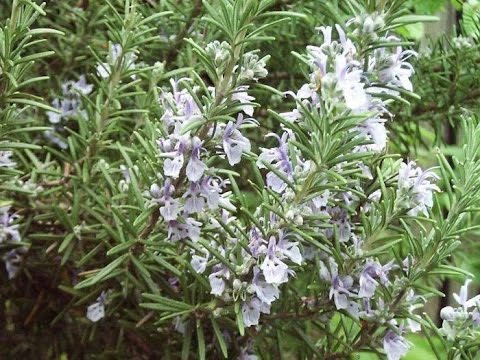

Watch this video on YouTube
Contraindications
Rosemary, as well as products based on it (infusion, tincture, decoction and oil), should never be used by pregnant women. It is also highly discouraged to use it in case of a tendency to seizures, epilepsy, hypertension, children under 9 years old and people with increased skin sensitivity.

